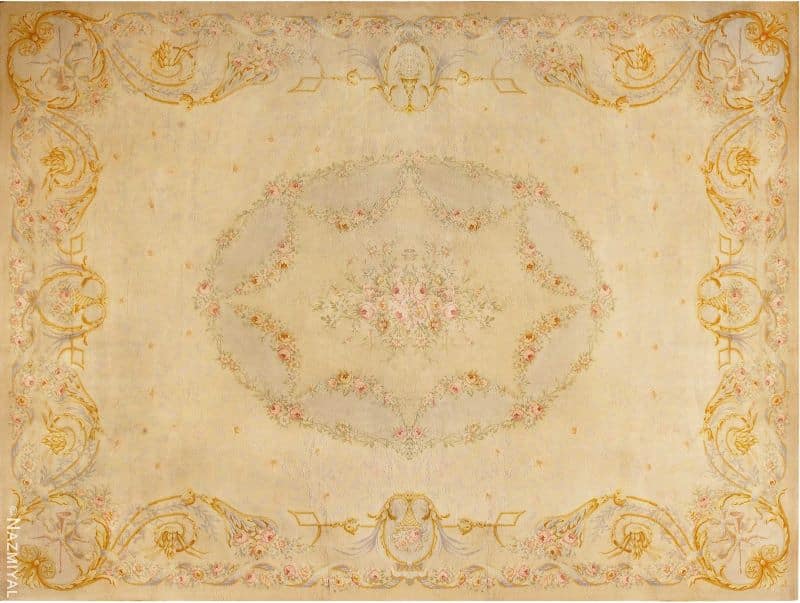History And Evolution Of Oriental Area Rugs
Learn About The History Of Persian Rugs
What Are The Nomadic Origins Of Rugs?

When most people think of rugs — in particular, pile rugs—and of their origin, Persia and Turkey are two of the main countries that come to mind. However, countries all over the world develop rugs, whether they are flat woven, plain weave, or tapestries. Since the earliest times in our history, skilled weavers have created many styles of rugs in different materials. Below is a guide to antique rugs.
More about the Nomadic origins of Oriental rugs and carpets
What Is The History of Seljuk and Beylik Dynasty Rugs as well as Antique Anatolian Carpets?

In the thirteenth century, Marco Polo’s journey through Asia took him to Turcomania (Anatolia), which was under the rule of the Seljuks at that time. While there, he had to take note of the remarkable carpets the weavers of that region produced.
A series of carpets and carpet fragments have been preserved from the mosques of Konya and Beyshehir (located in south-central Anatolia). These pieces come from this early period of Turkish rule, and scholars have attributed them to the period when the mosques were first built.
More about the Seljuk and Beylik Dynasty
What Is The History of Ilkhanid Dynasty Rugs & Carpets?
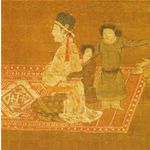
Islamic culture in Iran, Mesopotamia, and Central Asia was nearly destroyed by The Mongol invasion during the thirteen century.
However, the culture survived, and by the fourteenth century, the Ilkhanid Mongol rulers had been converted to Islam and they became prodigious patrons of the arts.
More about Ilkhanid Dynasty rugs and carpets
What Is The History of Timurid Dynasty Carpets and Rugs?
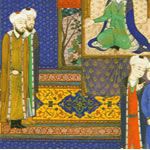
During the late fourteenth century, Timur, a Chaghatai Turk claiming he was descended from Genghis Khan, founded the Timurid Dynasty in a region that stretched from Central Asia to Eastern Turkey.
Under his rule and that of his descendants, art and architecture thrived, brought upon by artists lured to the realm.
More about Timurid Dynasty carpets and rugs
What Is The History of Ottoman Dynasty Carpets & Rugs?
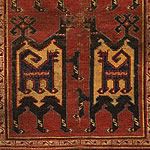
The Osmanli—more commonly known as the “Ottoman” Turks—were one of many Anatolian ruling families, referred to as Beyliks.
However, it took them less than 50 years to become the prominent Turkish dynasty there, and they would rule Western Asia and the Eastern Mediterranean until World War I. During that period, some of the most extraordinary pieces in the history of Oriental rugs were manufactured.
More about Ottoman Dynasty carpets and rugs
What Is The History of Mamluk Dynasty Rugs and Carpets?
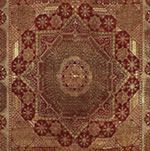
The Mamluk Dynasty rose to power in Egypt during the mid-thirteenth century. Originally “slave-soldiers” of Turkic descent, they ended up building a thriving carpet industry in the capital of their empire, Cairo, and many of these carpets have been preserved.
Mamulk carpet designs are known for being extremely complex, with large medallions adapted from Islamic geometric ornament that consist of intersecting compartments of various forms.
More about Mamluk Dynasty rugs and Carpets
What Is The History of Safavid Dynasty Carpets and Rugs?

The Timurid dynasty would not last long after the fifteen century. Turkoman dynasties in Mesopotamia and Northwest Persia had taken the power away from the Timurid’s in those regions.
Around 1501, backed by nomadic Turkoman troops, Shah Ismail overpowered the Turkoman dynasties and established a new dynasty—the Safavid dynasty—across Iran that would end up lasting until the early eighteenth century.
More about Safavid Dynasty rugs and carpets
What Is The History of Mughal Dynasty Carpets and Rugs?
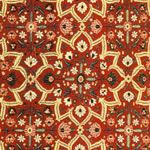
If early Aryan rulers in India created any carpets like their nomadic Iranian and Persian relatives did, no trace of them has ever been found. As such, the early history of antique Oriental rugs in India is quite unclear.
However, by the thirteen century, Muslims conquered Northern India. They would come to establish the Dehli Sultanates, a kingdom with strong cultural ties to Persia.
More about Mughal Dynasty carpets and rugs
What Is The History of Carpet and Oriental Rug Weaving in the Far East?
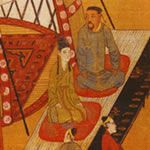
The farthest back archaeologists can find proof of pile rugs being created is the first to third centuries A.D., during the Han period. These proofs have been found along the western periphery of China. However, it’s nearly impossible to be sure of how early the carpets began to be produced in China since no evidence of them has been found going further back than that.
Historians believe that the Altaic nomads that are credited with inventing pile carpets eventually spread their technique into China, East Turkestan, Tibet, and even into the Middle East and Iran by ancient times.
More about carpet and rug weaving in the Far East
What Is The History of Europe and Early Oriental Rugs & Carpets?
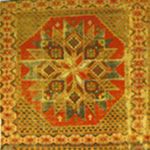
Examples of knotted carpets were created in Egypt by late Roman times, but there is no evidence that they were a part of the Roman heritage that ended up being passed down to Medieval Europe.
Egypt was cut off from the Late Roman or early Byzantine Empire when it was conquered by the Islamic Empire in 642. During this period, antique Oriental rugs disappeared from European material culture. Spain was the only exception, which ended up being conquered by the Muslims in 711.
More about Europe and Early Oriental rugs and carpets
What Is The History Of The Qajar Dynasty Nineteenth Century Rug Revival?

By the time the nineteenth century came around, European buyers were no longer purchasing the number of Persian rugs that they had in the past. The sharp decline adversely affected the production of these area rugs in the Middle East. However, it wasn’t the only reason for this decline in production.
When the Ottoman power also began to decline, the Turkish elite developed a taste for western styles. This, in turn, further weakened artistic production, which also included textiles and carpets.
More about the Qajar Dynasty 19th Century Rug Revival
What Is The History And Evolutions The Modern Contemporary Area Rugs?
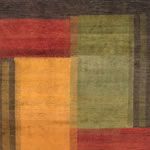
Oriental rug production received a huge incentive during the later nineteenth and twentieth century due to European involvement. This was great for invigorating the market, but it also came with its own set of drawbacks.
Most adversely impacted was the realm of dyes. During the mid-nineteenth century, German scientist invented new dyes — synthetic, chemical-based dyes that could be produced much faster than vegetable-derived colors.
View our collection of: Modern Rugs
An Overview of the History of Rugs
This blog is based on a post by Wilbur Pierce called “Antique Carpet DNA“, originally published on July 15, 2011.
Take a moment and imagine that it is 100,000 years ago. Picture a Neanderthal couple, living in a cave. The couple is decorating their home with paintings on the walls, drawing with charcoal from their fire and red rocks containing iron. They are among some of the first artists in all of humankind. What they wouldn’t know then is that many generations into the future, art would develop and change and eventually, we would make art out of floor coverings, which we now have as antique rugs.
The History of Rugs as a Functional Pieces
Imagine that generations later, some great-great-great-and-so-on grandchild of this Neanderthal couple is now a woman in Central Asia. In the 5th century BC, a carpet now known as the Pazyryk carpet was woven, probably in Siberia. It is the oldest known carpet, and our first glimpse into the beginning of the art of weaving and rug making.
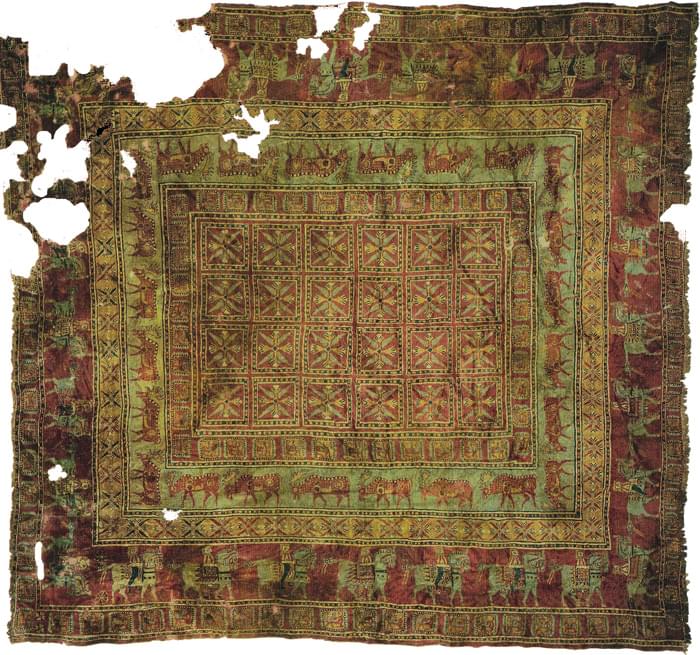
The Pazyryk Carpet.
Still hundreds of years later, the women of Persia Turkey, and the Caucasus were weaving blankets to protect themselves from the cold of the desert at night. These people wove saddlebags for camels and blankets for the caravanserai (or a “roadside inn” along the Middle Eastern Silk Road). Meanwhile, in China, caterpillars were being coddled and bred for the fine fiber they produced, more valuable than gold. This silk fiber was spun into blankets and woven into rugs for the Imperial Palace and traded along the trade routes of Asia Minor.
In the 8th century, when the Moorish commander Tariq crossed the Pillars of Hercules into Spain, he carried with him a vast selection of carpets. The route he crossed was later named “Gibraltar” and by this invasion, Tariq opened the way for the Iberian carpet industry which eventually migrated into France. Here, religious and ethnic groups would weave their cultural and religious symbols and stories into rugs. They wove their prayers in Kufic script, images of their mosques, flowers, and cedar trees into their rugs.
The History of Rugs as an Art
People should view rugs as art. The craft of weaving for functionality soon began to evolve into an art, and the textiles began to be used for decorations on the floors of tents and the halls of palaces. The cave designs you pictured before transformed into hunting scenes on rugs, creating a picture of what daily life was like, and what people’s hopes and aspirations were. Specific designs became associated with different tribes, cities, towns, or villages. Even today we can recognize a Khotan, Kerman, Bakhtiari, Aubusson, Agra, or Peking.
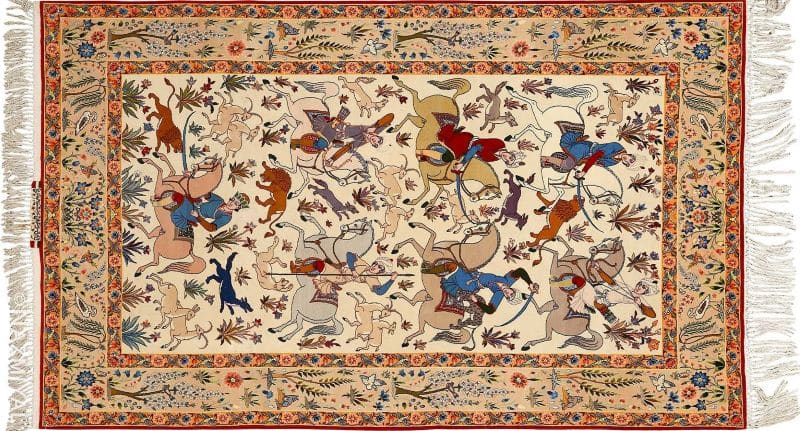
A Persian rug with a hunting scene.
Fast forward to Europe’s medieval period. Now drafty castles needed heavy, insulated wall hangings to insulate the royals from cold winds. The stone they were built with offered protection against arrows and stones, but not against the cold and damp. Thus, the tapestry was created. Nobles showed their wealth by weaving gold into their wall hangings. At the same time in France, a weaver at the Savonnerie created designs on plush carpets to decorate the palace at Versailles. While the king had plush rugs decorating the palace, the merchant class lived with flat weaves. Aubusson was founded to provide carpets for the bourgeoisie.
Eventually, European carpet entrepreneurs like Ziegler sent designs to the weaving tribes of the Middle East to satisfy the demand for European styles. Ziegler made it possible so that speaking French was not necessary to decorate your home with a rug of sophisticated design.
From this point until the Industrial Revolution, weaving carpets was women’s work, save for a few men who rose to prominence in signing their carpets (such as Manet, Monet, DaVinci, Utrello, Titian or Kermani). Design was favored over quality and machine made replaced handmade. At first it seemed that the automated weaving machines of Axminster would eliminate the hand weaving industry, but instead all it did was make rugs and carpets available to all classes of people. It brought carpets to the homes of rich and poor alike.
However, a dichotomy began to develop. With each new invention that made weaving easier, there was the ability to make mass market carpets to overtake decorator carpets. It presented an entrepreneurial opportunity for many, but for those with refined taste, the holy grail of carpets still remains the hand-woven designs and production that spanned a few centuries and now bear the title of antique.
Now rare, these carpets have a pedigree and an aura about them that exudes quality, history and art in each knot. Even to the untrained eye, the difference between a true masterpiece and a mass-made reproduction should be clear. Take a look at some beautiful antique rugs for yourself, and now that you know the history behind them, hopefully your appreciation for them will be immense.

